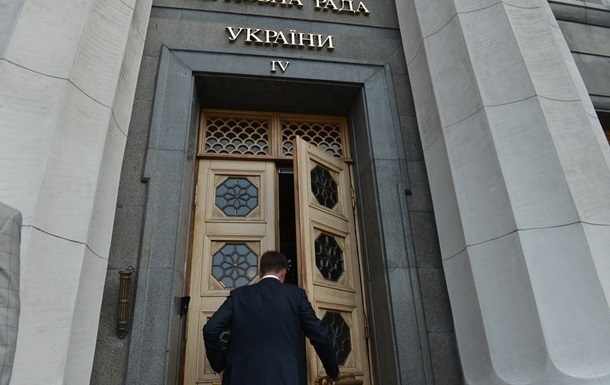Between revenues and expenditures: the Ukrainian parliament is trying to balance the budget
6 October 16:54
The budget process in Ukraine has passed another milestone. By October 1, MPs and parliamentary committees had to submit their proposals to the draft budget for 2026. And they did so. Other relevant institutions also had the opportunity to evaluate the budget proposals. Komersant found out what attracted the attention of experts the most.
There are many proposals to increase spending that are not backed by realistic sources of funding. This is how Roksolana Pidlasa, the head of the parliamentary budget committee, which is currently preparing the draft law for the first reading, outlined the main challenge of the current stage of work on the draft budget.
In fact, the sufficiency of expenditures and the realism of revenues have been, are, and will be the main topics of budget discussions.
Adequacy of budget expenditures
State budget expenditures for 2026 are planned to amount to UAH 4.8 trillion. This is by 9.6% more than in 2025, but taking into account inflation, the real amount of expenditures will actually decrease by 2.4%. This is one of the conclusions contained in the report of the auditors of the Accounting Chamber of Ukraine.
The largest item of expenditure is national security and defense – UAH 2.8 trillion, which is 6.5% more than this year’s expenditures approved in the July defense budget. At the same time, auditors point out that these funds may not be enough, as it is proposed to leave wage expenditures, including military pay, at the level of 2025. Although, for example, this year’s need for such payments by the end of the year may be approximately UAH 90 billion more.
“Obviously, we should expect that the 2026 budget will be revised to increase defense spending in the middle of the year,” emphasizes Oleksiy Gerashchenko, an economist and professor at the Kyiv Mohyla Business School.
However, it is worth mentioning this year’s biggest budget innovation in the field of defense spending, the so-called “defense reserve” worth UAH 200 billion. This is a new budget program of the Ministry of Finance, the funds of which will be distributed by the government to the Defense Forces to respond quickly to the needs on the battlefield.
“Taking into account the foreseen reserve of UAH 200 billion, which is proposed to be allocated for the security and defense sector by the decision of the Cabinet of Ministers, expenditures will increase by UAH 168.6 billion, or 6.4 percent,” the Accounting Chamber report also concludes.
Another priority in terms of spending is social protection and social security. It is planned to allocate UAH 481 billion for these needs, which is 11% more than in 2025.
At the same time, the draft State Budget for 2026 continues the practice of underestimating the subsistence minimum. This was stated by the Parliamentary Committee on Social Policy and Veterans’ Rights.
As a reminder, starting from January 1, 2026, the subsistence minimum per person is planned to be set at UAH 3,209, while now it is UAH 2,920. And, as the deputies recognize, it is already 2.9 to 3.7 times lower than the actual subsistence level.
“Since the subsistence minimum, in accordance with the Law of Ukraine “On State Social Standards and State Social Guarantees”, is the basic state social standard on the basis of which the amounts of basic state social guarantees (minimum wage, minimum pension, state social assistance) are determined, it can be stated that the entire social part of the draft State Budget of Ukraine for 2026, as in previous years, is formed on the basis of a significantly lower subsistence minimum,” the parliamentarians said in their conclusions.
Reasonableness of budget revenues
State budget revenues in the draft budget for the next year are envisaged at UAH 2.9 trillion, which is 16.4% more than approved for 2025. However, the Accounting Chamber believes that some of the expected revenues are not sufficiently substantiated. In this context, they mention the UAH 60 billion that the government plans to receive by improving the work of the reformed State Customs Service to reduce customs evasion, as well as UAH 26 billion that should come from improving tax debt collection.
However, the most questionable is the validity of the plans to receive UAH 22.5 billion due to changes in tax legislation in terms of the introduction of the exchange of information on income received through digital platforms and the excise tax on water. These doubts are fueled by the fact that the relevant changes have not yet been approved by the Verkhovna Rada. And it is not known whether they will be approved at all. The head of the Budget Committee, Roksolana Pidlasa, assesses the parliamentary prospects for the new taxes as she called them: “on OLX” and “on sweet water”.
“If adopted and entering into force by January 1, 2026, they could bring in UAH 22.5 billion a year. But so far, it seems that the ‘OLX tax’, which is UAH 14 billion, is much more realistic for voting in the Verkhovna Rada, although there may be questions,” the MP admits.
In general, Oleksiy Gerashchenko, an economist and professor at the Kyiv Mohyla Business School, is rather skeptical about the prospects for the budget’s own revenues.
“I do not rule out that we will have to consider tax increases, because the plan for budget revenue growth is significantly ahead of the planned nominal economic growth rate, which means that the share of GDP redistribution through the budget will have to increase. And there are only two ways to do this: either significant de-shadowing or an increase in tax rates. So far, we are not talking about tax increases, but I do not exclude that such a requirement may come from the IMF and partners,” the expert notes.
He also believes that the main challenge is to obtain the necessary amounts of external financing, which is more than $40 billion in budget deficit. And so far, as the economist reminds, there is no agreement on the corresponding amounts from partners.
Vulnerability of local budgets
For 2026, local budget revenues are envisaged at UAH 873.8 billion, which is UAH 157.1 billion or 21.9% more than in 2025. This includes both own revenues and transfers from the state budget.
At the same time, the structure of these revenues may undergo significant changes. Yurii Pasichnyk, Chief Researcher at the Department of Socio-Economic Development of Rural Areas of the Institute of Agrarian Economics, Doctor of Economics, points this out .
“The most important own resource of communities – personal income tax (PIT) – in 2025 is credited to local budgets in the amount of 64%, and in the draft State Budget-2026 this share is proposed to be reduced to 60%. At the same time, personal income tax on military salaries will be transferred to a special fund of the state budget. According to the calculations of the scientists of the Institute of Agrarian Economics, this approach can lead to a reduction in expenditures for communities by about UAH 15-16 billion, even if revenues increase in general,” the expert emphasizes.
Thus, we can conclude that in general, in 2026, local budgets will remain vulnerable, and their financial autonomy may be significantly reduced.
This is possible because the budget bill has not yet become law. The Parliament’s Budget Committee is currently busy processing MPs’ comments and suggestions. Consideration of the draft law on the State Budget of Ukraine for 2026 in the first reading is scheduled for October 21-23, and in the second reading – November 18-20.
Author: Sergiy Vasilevich









